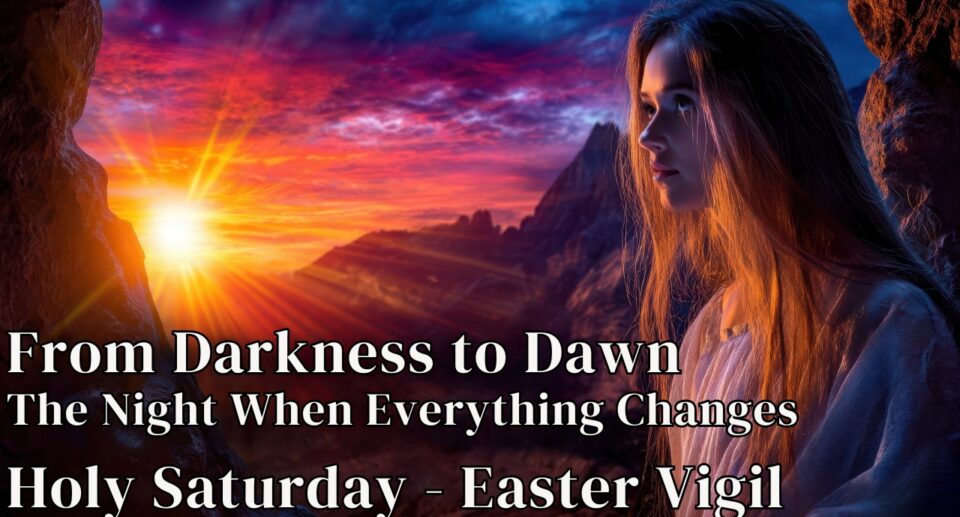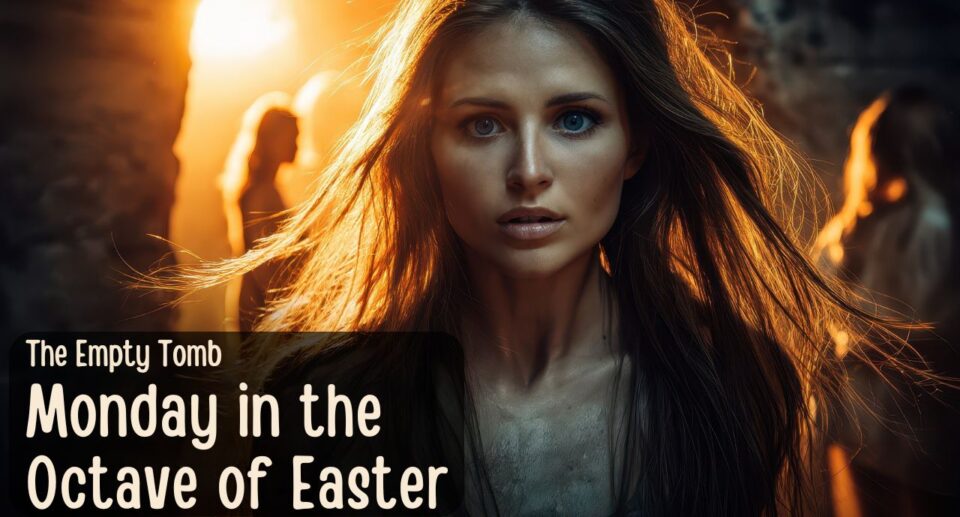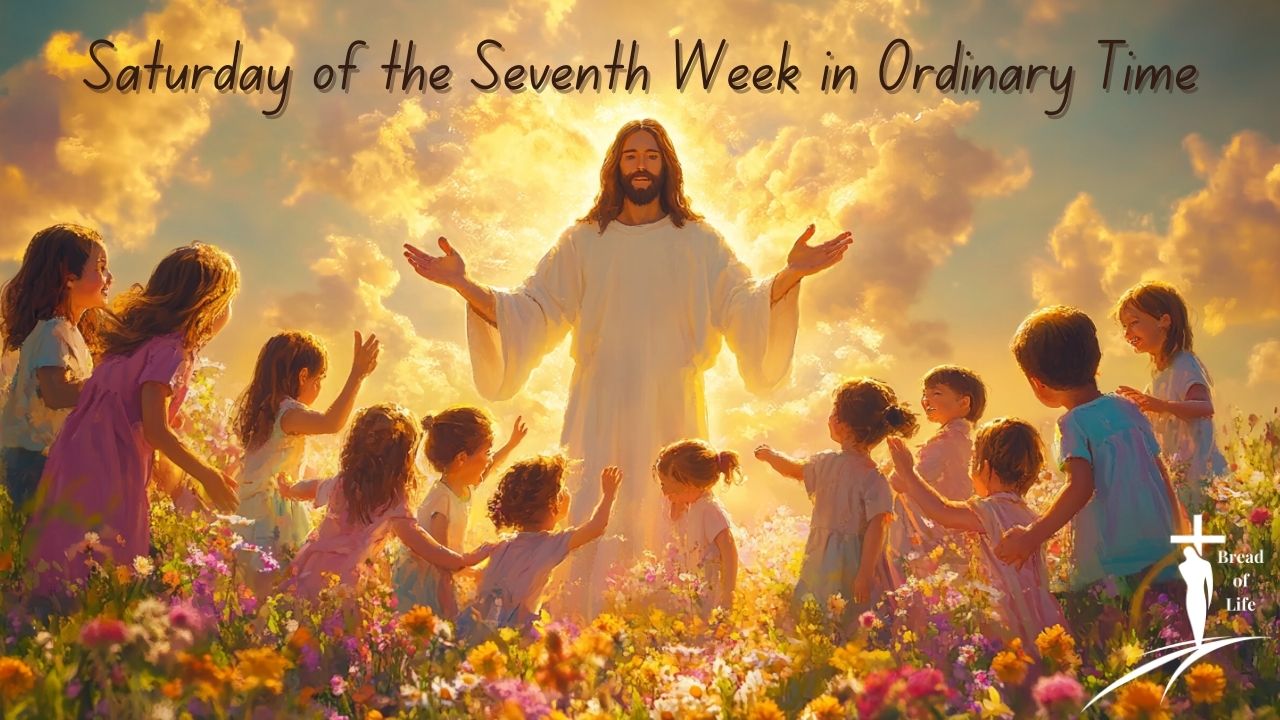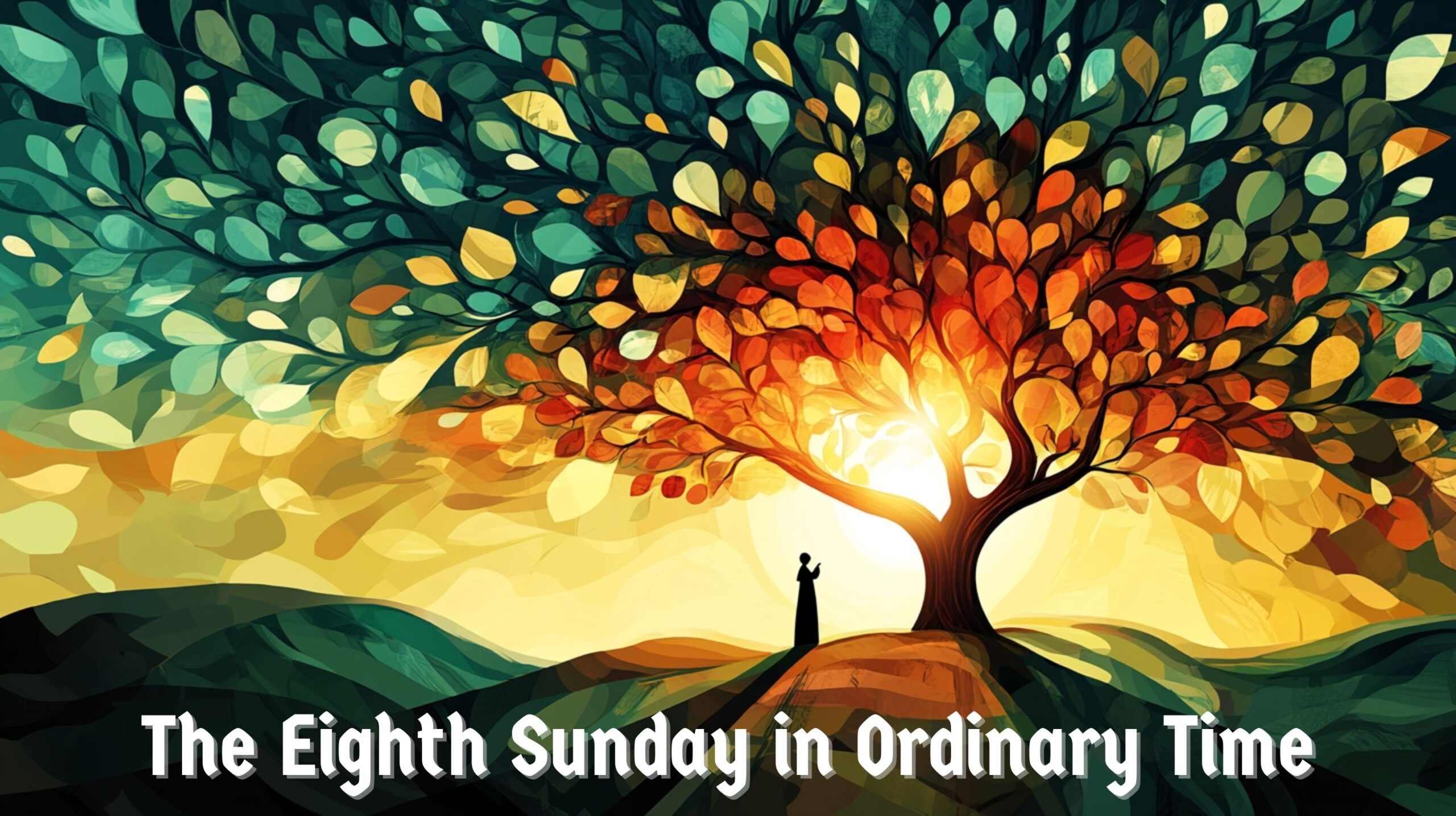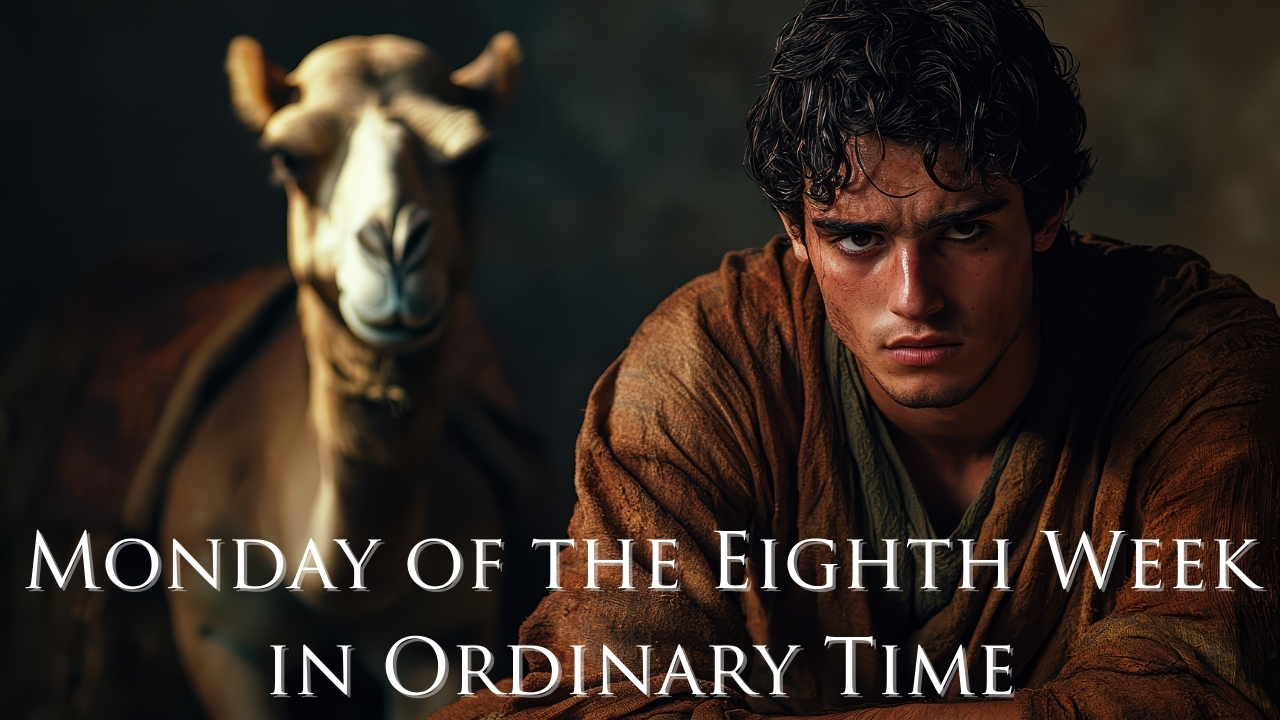The Day Death Lost: When Love Rolled Away the Stone | Easter Sunday Readings | April 20, 2025

Today, Easter explodes into our world with an announcement so audacious it still startles after two thousand years: He is risen! The tomb is empty! Death has lost its grip!
Through this reflection, you’ll discover:
- Why the disciples’ transformation from cowards to martyrs provides compelling evidence for the resurrection
- How Christ’s victory over death becomes our victory through baptism
- What “seeking what is above” means for everyday life in a world still marked by suffering
- Where resurrection power can be found in your personal circumstances right now
Readings covered: Acts 10:34a, 37-43; Psalm 118:1-2, 16-17, 22-23; Colossians 3:1-4; John 20:1-9
Perfect for anyone seeking hope in difficult times, deeper understanding of Easter’s revolutionary meaning, or fresh inspiration to live as resurrection people in a Good Friday world.
#EasterSunday #ResurrectionJoy #EmptyTomb #DeathDefeated #NewCreation #EasterHope #RisenChrist
The Day Death Lost: When Love Rolled Away the Stone
Mary Magdalene reached the tomb just as night surrendered to dawn. Her eyes, swollen from weeping, struggled to adjust in the gray half-light. Then she saw it—the stone. Moved. The entrance gaping open like a surprised mouth.
She didn’t walk but ran to find Peter and John, her breathless words tumbling out in panic: “They have taken the Lord from the tomb, and we don’t know where they put him!”
The two men raced to the site, their pounding hearts matching their pounding feet. John, younger and faster, reached the tomb first but hesitated at the entrance. Peter, characteristically impulsive, burst past him and plunged inside. The burial cloths lay there—not scattered as if by grave robbers, but neatly arranged. The head cloth set apart, carefully folded.
John entered next. He saw. He believed.
But what exactly did he believe? That the impossible had happened? That death—the most immutable fact of human existence—had been defeated? That love had proven stronger than the grave?
Today, Easter explodes into our world with an announcement so audacious it still startles after two thousand years: He is risen! The tomb is empty! Death has lost its grip! This isn’t a metaphor or a comforting spiritual truth—it’s a history-splitting reality that changes everything.
Acts shows us the earliest preaching about this reality. Peter, speaking to Gentiles in Cornelius’s house, delivers the core gospel message: “They put him to death by hanging him on a tree. This man God raised on the third day and granted that he be visible… He commissioned us to preach to the people and testify that he is the one appointed by God as judge of the living and the dead.”
This testimony comes from transformed witnesses. The same Peter who denied knowing Jesus now boldly proclaims him. The disciples who fled at his arrest now risk everything to announce his resurrection. What explains this radical change? Not mass delusion or elaborate conspiracy, but an encounter with the risen Christ so undeniable it transformed cowards into martyrs, doubters into evangelists.
Our psalm captures the explosive joy of this encounter: “I shall not die, but live, and declare the works of the LORD.” The rejected stone—Christ crucified—has become the cornerstone of a new creation. “By the LORD has this been done; it is wonderful in our eyes.”
This wonder isn’t confined to first-century Palestine but extends to us. Paul tells the Colossians—and us—”You were raised with Christ.” Not “you will be raised someday” but “you were raised”—past tense, accomplished fact. The resurrection isn’t just Christ’s victory but ours. Through baptism, we’ve already been incorporated into this resurrection reality, though its full manifestation remains veiled: “When Christ your life appears, then you too will appear with him in glory.”
What does all this mean for us today?
First, the resurrection vindicates Jesus’ entire mission. It’s God’s definitive “yes” to everything Jesus taught and embodied—his message of radical love, forgiveness of enemies, solidarity with outcasts, critique of hollow religiosity, and vision of God’s kingdom. The empty tomb validates the cross not as tragic martyrdom but as world-transforming sacrifice. If Jesus had remained dead, his message would have been just another beautiful but failed vision. The resurrection declares: He was right all along.
Second, Easter confronts us with hope beyond imagining. Death—our most fundamental fear—has lost its finality. The greatest power of oppression—the ability to kill—has been subverted. Pilate thought he had the last word when he sent Jesus to execution. The resurrection reveals who really has the last word. As Martin Luther King Jr. said, “Truth crushed to earth will rise again.” No matter how dark our world becomes, Easter proclaims that darkness cannot extinguish the light.
Third, the resurrection isn’t just about the afterlife but about how we live now. Mary ran to tell others. Peter and John raced to see for themselves. Encountering the risen Christ propels us into action. If the tomb is empty, then everything changes—our priorities, our courage, our treatment of others, our relationship with creation itself. We live as citizens of a new reality, where death’s defeat is already accomplished though not yet fully manifest.
This explains Paul’s imperative: “Seek what is above.” Not as otherworldly escapism, but as recognition that the power transforming all creation is already at work in us. Easter isn’t an abstract doctrine but an ongoing revolution, with Christ’s resurrection as its first fruits.
Throughout history, believers have discovered that living in this resurrection reality transforms even the darkest circumstances. Early Christians facing Roman persecution proclaimed “Christ is risen!” as they went to their deaths. Medieval mystics experiencing the risen Christ’s presence amid plague and famine. Modern martyrs like Dietrich Bonhoeffer finding “resurrection in the midst of death” even in Nazi concentration camps.
What might this resurrection power look like in our lives?
It means we can face our personal Good Fridays—failures, losses, betrayals, even death itself—with the confidence that they aren’t the end of the story. The God who rolled away the stone can roll away whatever stones entomb us.
It means even small resurrections matter—broken relationships mended, addictions overcome, depression lifting, purpose rediscovered, justice advanced. These aren’t just positive changes but genuine participation in the cosmic resurrection power unleashed on Easter morning.
It means no person is beyond redemption, no situation beyond transformation. The women came expecting to anoint a corpse; instead, they became the first evangelists of new life. Their expectations of finality were interrupted by radical new beginning. The same can happen to us.
Mary Magdalene misunderstood at first—”They have taken the Lord!”—thinking grave robbery rather than resurrection. We too often settle for diminished interpretations of Easter—a spiritual metaphor, a subjective experience, a symbol of natural renewal. But John “saw and believed” the literal, physical, world-shattering truth: Christ bodily risen, death decisively conquered.
This belief demands evidence, and the early witnesses provided it. “We ate and drank with him after he rose from the dead,” Peter testifies in Acts. The resurrection wasn’t a private spiritual experience but a public, verifiable reality that transformed history.
Our response to this reality isn’t passive acceptance but active participation. We join Mary, running to share the news. We join the disciples, allowing our fear to be transformed into mission. We join creation itself, which as our psalm proclaims, recognizes this day as fundamentally different: “This is the day the LORD has made; let us rejoice and be glad.”
Today, in churches around the world, millions will greet each other with the ancient proclamation: “Christ is risen! He is risen indeed!” This isn’t just liturgical tradition but revolutionary announcement. It declares that despite all evidence to the contrary—war, violence, environmental destruction, personal suffering—God’s love is stronger than death, and life gets the final word.
The stone has been rolled away. The tomb stands empty. Christ is alive.
Everything has changed. And so can we.

